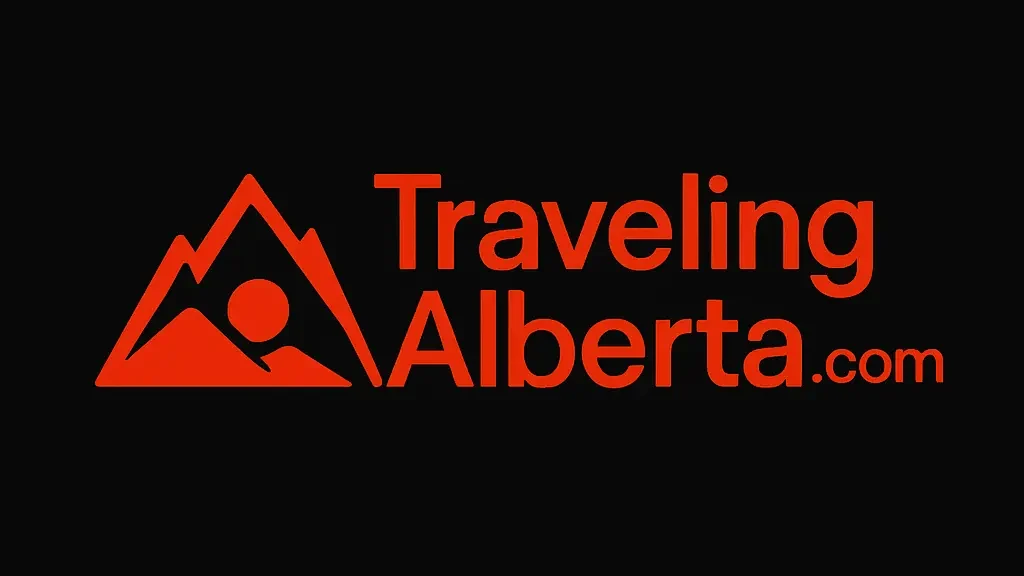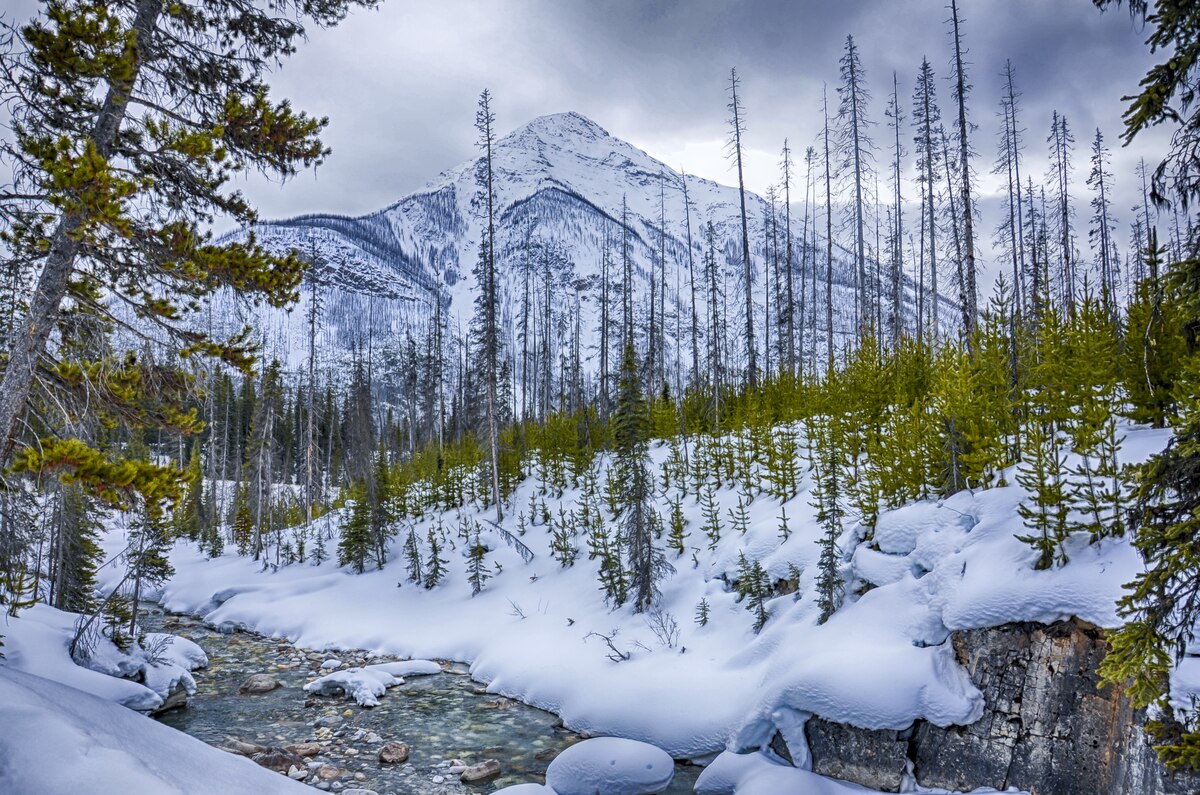Kootenay National Park British Columbia is one of Canada’s most underrated natural treasures. Tucked within the Canadian Rockies and part of a UNESCO World Heritage Site, Kootenay offers an incredible diversity of landscapes — from glacier-fed rivers and jagged peaks to deep canyons, hoodoos, and steamy mineral hot springs.
While Banff and Jasper draw millions of visitors annually, Kootenay provides a quieter, equally breathtaking escape where nature takes center stage. Whether you’re after epic hikes, wildlife encounters, or a peaceful soak in the famous Radium Hot Springs, Kootenay is a destination that surprises and delights.
In this guide, we’ll cover top attractions, hiking trails, camping, travel tips, and the best times to visit.
Why Kootenay National Park British Columbia Should Be on Your List
Kootenay National Park stretches over 1,400 square kilometers, offering a rich blend of ecosystems — from dry grasslands to alpine tundra. The park’s highlights include dramatic canyons, rivers, waterfalls, and mountains shaped by glaciers over millions of years.
Unlike other Canadian national parks that can feel crowded, Kootenay offers serenity and solitude. You can hike all day and meet only a few fellow travelers, especially if you venture beyond the main highway corridor.
Why visitors love it:
- Diverse landscapes: Arid valleys, subalpine forests, rugged peaks, and icefields — all in one park.
- Cultural significance: The land is sacred to Indigenous peoples including the Ktunaxa and Secwépemc Nations.
- Abundant wildlife: Expect to see bighorn sheep, elk, black bears, and possibly grizzlies.
- Easy access: The park’s scenic Highway 93 makes exploration simple even for first-time visitors.
Top Attractions in Kootenay National Park
Radium Hot Springs
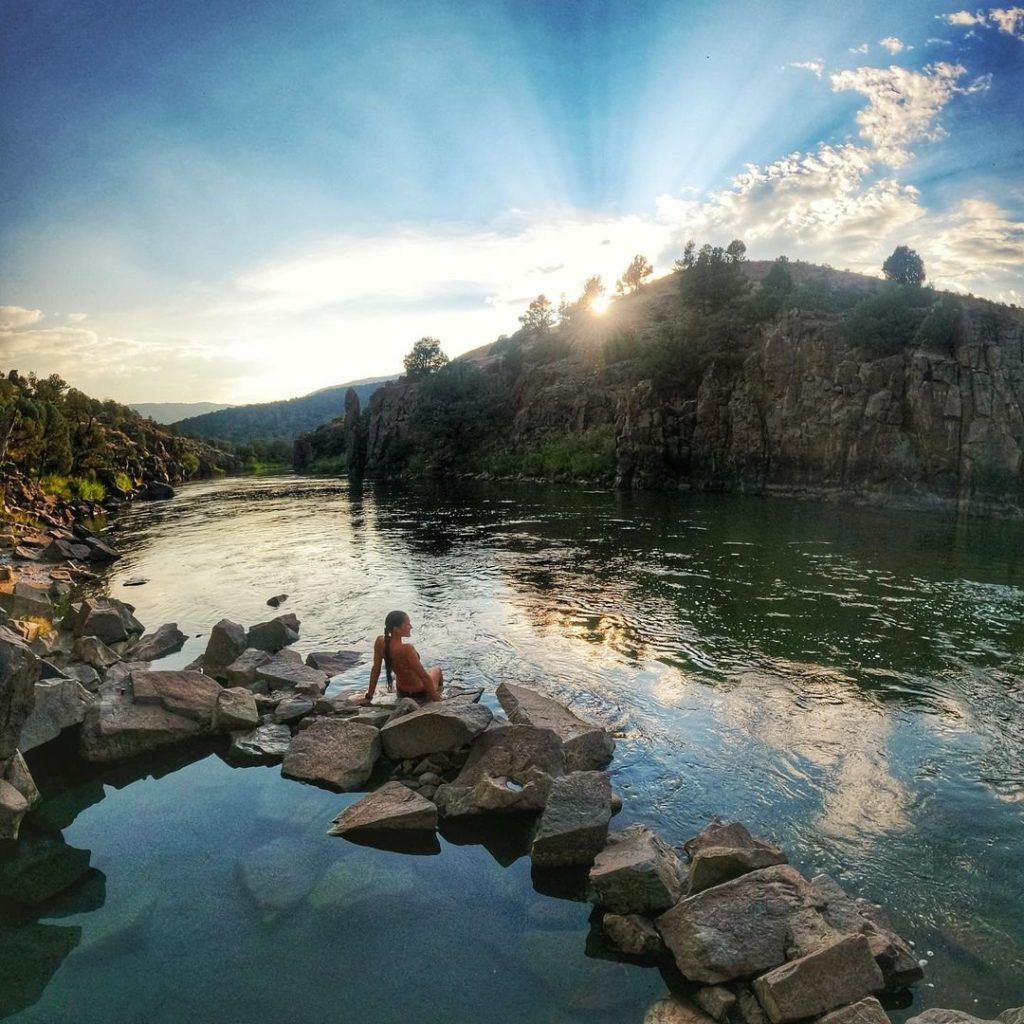
Radium Hot Springs is one of the most popular attractions in Kootenay National Park British Columbia. These natural mineral pools are nestled between towering cliffs at the south end of the park. The water’s high mineral content — rich in calcium, magnesium, and sulfate — is believed to provide therapeutic benefits.
Facilities include a large hot pool (38–40°C) and a cooler swimming pool, change rooms, and a small spa. The springs are open year-round, offering a magical winter experience with steam rising into the frosty air.
Tip: Visit in the early morning or late evening to avoid crowds and enjoy a tranquil soak.
Marble Canyon
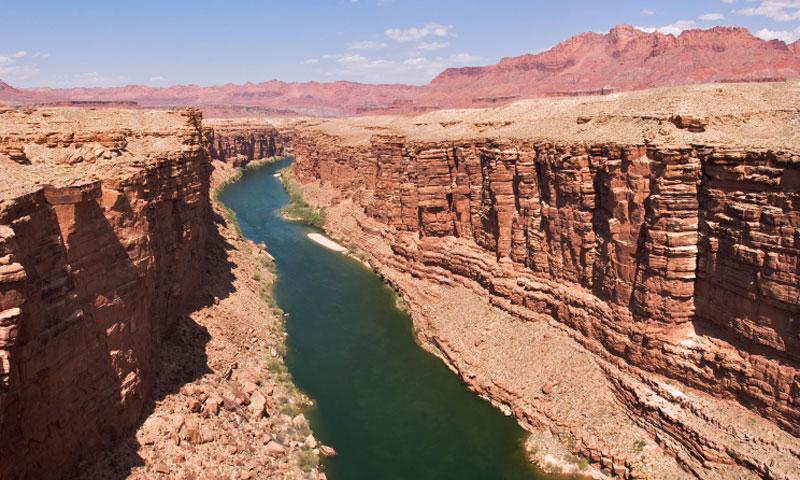
Marble Canyon is a dramatic limestone gorge carved by Tokumm Creek. A short, easy trail crosses a series of footbridges, giving you thrilling views straight down into the narrow canyon where rushing water has shaped the rock over millennia.
It’s an ideal stop for families or travelers wanting a quick but rewarding nature walk. In spring, snowmelt creates powerful waterfalls; in winter, the canyon transforms into an icy wonderland.
Photo tip: The white rock, blue-green water, and burnt-red trees from past wildfires make for striking contrasts.
Paint Pots
The Paint Pots are a rare geological and cultural site in Kootenay. These iron-rich springs stain the surrounding earth ochre red and yellow — pigments historically used by Indigenous peoples for ceremonial and artistic purposes.
A 2 km loop trail takes you past the Paint Pots, wetlands, and remnants of early 20th-century mining efforts. Interpretive signs explain the site’s significance.
Note: Stay on the boardwalks and trails to protect this fragile landscape.
Sinclair Canyon
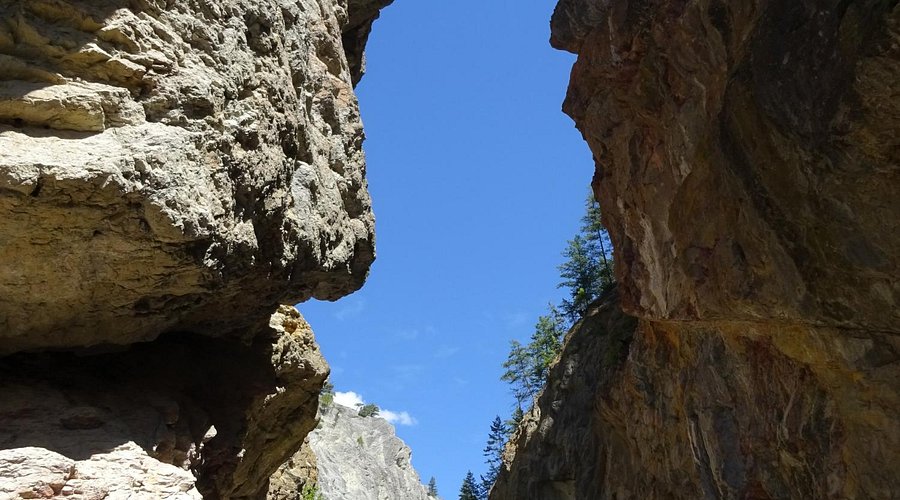
As you enter Kootenay from the south, you’ll pass through Sinclair Canyon, where the highway threads a narrow gap between towering cliffs. This dramatic entry point offers pullouts where you can stop for photos or to explore on foot.
There are short trails here leading to overlooks with stunning views of the Columbia Valley and the canyon’s sheer walls.
Kootenay Valley Viewpoint
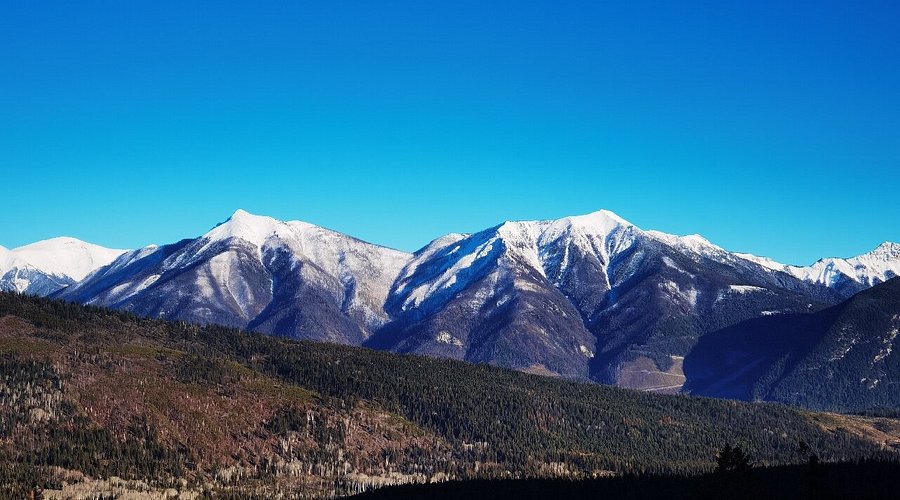
This easily accessible stop on Highway 93 provides breathtaking panoramic views of glacier-carved valleys, the Mitchell and Vermilion Ranges, and endless forest. It’s perfect for a picnic or simply a chance to absorb the beauty of the Canadian Rockies.
Bonus: Come at night for incredible stargazing — on clear nights, you might spot the Milky Way.
Best Hiking Trails in Kootenay National Park
Stanley Glacier Trail
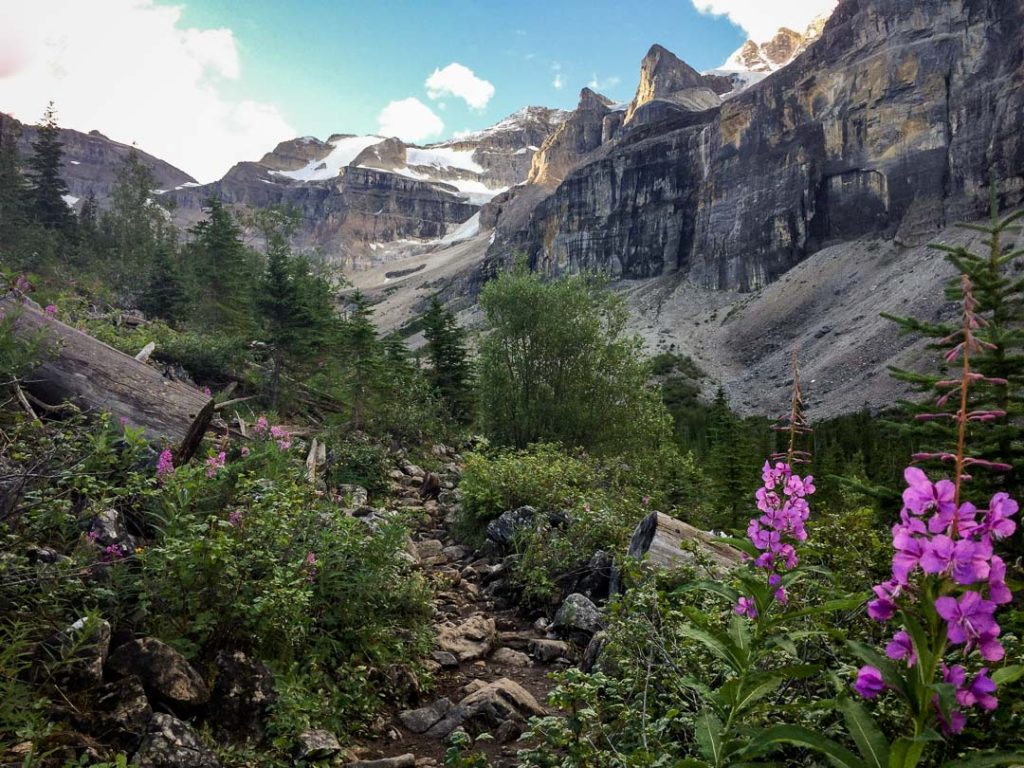
Distance: 10 km round-trip
Elevation gain: 365 m
Difficulty: Moderate
This popular trail combines history, geology, and natural beauty. Walk through a regenerating forest shaped by fire, alongside wildflowers and waterfalls, to a hanging valley with glacier views.
Insider tip: Look for ancient marine fossils in exposed rock along the trail.
Floe Lake Trail
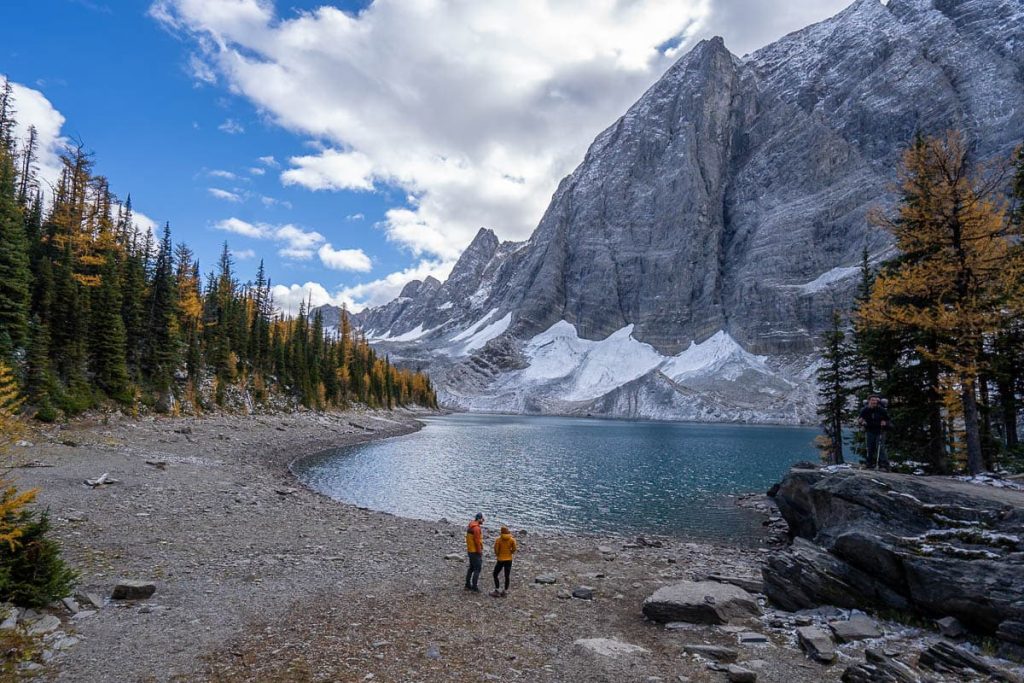
Distance: 21 km round-trip
Elevation gain: 1,000 m
Difficulty: Hard
Floe Lake is one of Kootenay’s most iconic destinations. The challenging trail rewards you with a stunning turquoise lake set against the towering Rockwall — a sheer limestone cliff that reflects beautifully on calm mornings.
Many choose to camp overnight at Floe Lake backcountry site to enjoy sunrise and sunset over the lake.
Dog Lake Trail
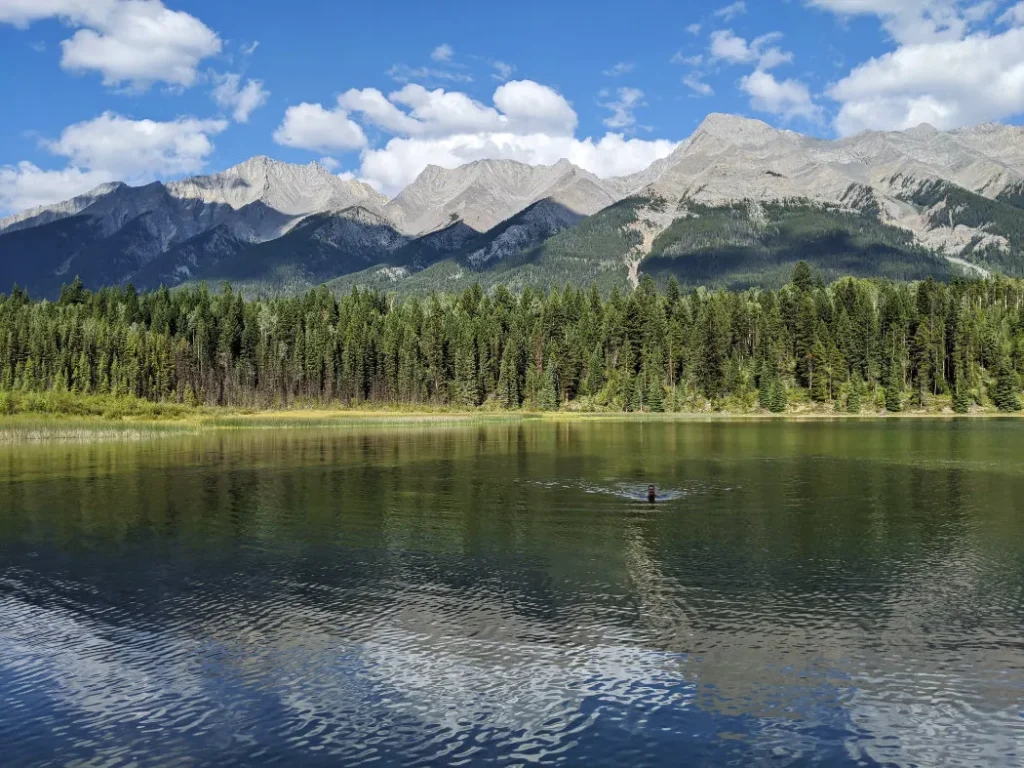
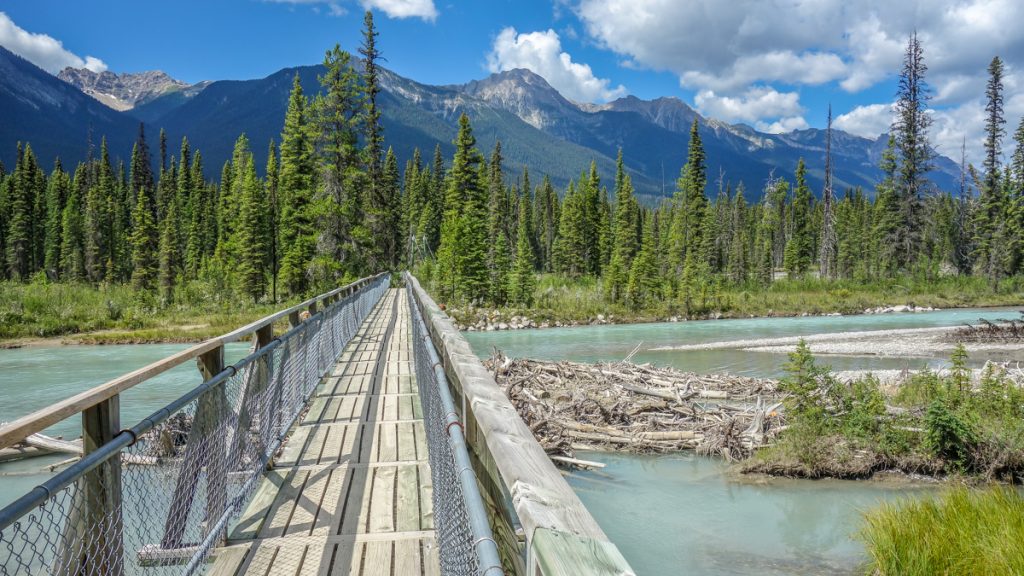
Distance: 5.2 km round-trip
Elevation gain: 90 m
Difficulty: Easy
This gentle trail is great for families and beginner hikers. You’ll wind through a peaceful forest to a small lake that reflects surrounding trees and mountains — a lovely spot for a quiet break or a picnic.
Camping in Kootenay National Park
- Kootenay offers a variety of camping experiences:
- Redstreak Campground (near Radium Hot Springs): Modern amenities including flush toilets, showers, RV hookups, fire pits, and interpretive programs.
- McLeod Meadows Campground: A smaller, more rustic option with basic facilities, located along the Kootenay River.
- Backcountry campsites: Available along major hiking routes like the Rockwall Trail and at Floe Lake. These require permits and advance reservations.
- Camping tip: Check for fire bans and bear activity updates before your visit.
When to Visit Kootenay National Park
- Summer (June–September): Best time for hiking, camping, and scenic drives. Wildflowers are in bloom, and wildlife is most active.
- Autumn (late September–October): Cooler weather, golden larches, and fewer visitors make this a peaceful season.
- Winter (November–April): The park is quiet, but Radium Hot Springs remains open and spectacular. Some areas are suitable for snowshoeing or cross-country skiing.
Wildlife in Kootenay National Park
- Kootenay is home to a rich array of wildlife. You might spot:
- Black bears and grizzlies
- Bighorn sheep, especially near Radium
- Moose, elk, mule deer
- Coyotes, wolves, and smaller mammals
Safety tips:
- Carry bear spray and know how to use it.
- Hike in groups and make noise to avoid surprising animals.
- Keep a safe distance — never feed or approach wildlife.
Practical Travel Tips
Getting there: Highway 93 South runs through the park, connecting Radium Hot Springs to Castle Junction in Banff National Park.
Parks Canada pass: Required for entry. Purchase daily or annual passes online or at the park gate.
Fuel and supplies: Available in Radium; no services deeper in the park.
Cell coverage: Limited — download maps and trail info before you go.
Final Thoughts
If you’re looking for raw natural beauty without the crowds, Kootenay National Park British Columbia delivers. From soothing hot springs to breathtaking hikes and scenic drives, Kootenay offers something for every nature lover.
Plan your visit to experience one of the Canadian Rockies’ true hidden gems — a place where you can reconnect with the wild, recharge in natural mineral pools, and explore landscapes that tell the story of Earth’s ancient past.
